As a Beaux Arts styled building, it is apparent that Grand Central Terminal was heavily influenced by the French. The style itself was taught at the École des Beaux-Arts in Paris, and many of the most famous American architects in the late 1800’s and early 1900’s studied there – including Whitney Warren, who worked on Grand Central. But beyond the building itself, Warren selected three French artists to create works for the Terminal. Probably the most known, Jules Coutan designed the sculptural group on the front facade of Grand Central. Painter Paul Helleu was selected by Warren to design the starry zodiac that fills the ceiling of the main concourse. The often forgotten, and likely least known of the three, was sculptor Sylvain Salieres. Salieres created many of the decorations inside the Terminal, including all those acorns – the Vanderbilt family crest.
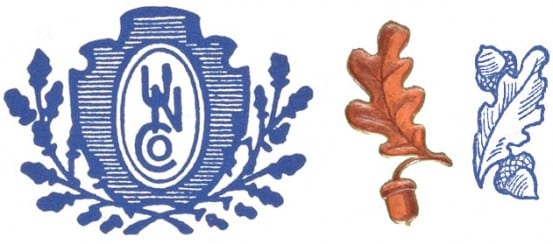
Acorns appear on the logo and menus of the Grand Central Terminal restaurant.
The acorns, however, were not restricted only to decorations within Grand Central – they also became part of the identity of one of the more famous tenants in the Terminal. We may know it today as the Oyster Bar, but when it first opened in 1913 it had just the bland name “Grand Central Terminal Restaurant.” The restaurant did, of course, have an Oyster Bar, and was definitely known for its oyster stew – but it served a wide variety of non-seafood delicacies (many did refer to the restaurant as simply the “Oyster Bar,” though). The French influence on the Terminal continued through some of the food – things like Bass Meunière and Capon Venitienne were on the restaurant’s first dinner menu.

Sugar packet and matchbooks from the original Grand Central Terminal Restaurant and Oyster Bar.
Grand Central’s centennial celebration will be held this Friday, a little bit early – probably since it would be easier for the MTA to celebrate it on a weekday. I suppose the MTA isn’t too far off, though. While Grand Central only opened to the public on the 2nd of February, a special gathering was held on the evening of February 1st. Architect Whitney Warren, and around a hundred of his friends, got a special tour of the new Terminal, including the very first dinner service at the Grand Central Terminal Restaurant at 8 PM. And what did they dine upon? Bass, mutton and squab were all main dishes on the menu that night.
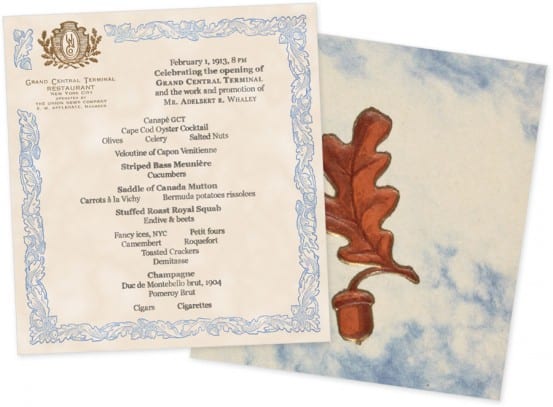
The menu for the first dinner at the Grand Central Terminal restaurant. Note that this is a recreation – a text only menu was published, and I placed it into the design of an actual 1917 restaurant menu.
The Railroad Reporter and Traveler’s News published an interesting look at what happened on that evening in the Terminal. Not only did it include the first menu served at the restaurant, it described other little tidbits – like the fact that a band was on the east balcony at opening, and the first song they played was the Star Spangled Banner. An opening ceremony of sorts was held right next to the information booth clock, where the keys to the Terminal were presented to the new manager, Miles Bronson. The second dinner at the restaurant, although quite late, was held shortly after for the employees of the John Peirce Company, who did construction work on Grand Central.
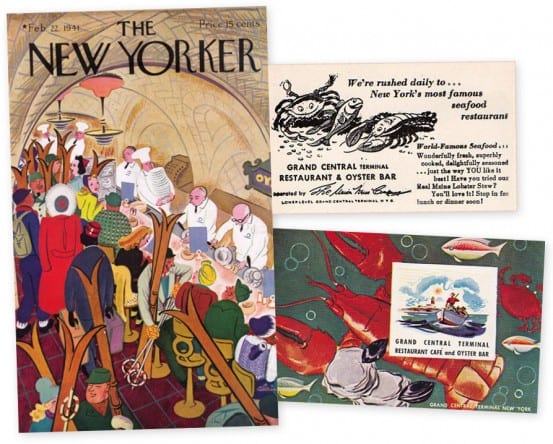
The February 22, 1941 edition of The New Yorker featured the GCT restaurant on the cover.
I’ve collected a bunch of artifacts from the Grand Central Terminal Restaurant, and the Oyster Bar’s 100 year history, all of which provide an interesting look into the Terminal’s longest operating and most established tenant. I must give tremendous thanks to the New York Public Library’s “What’s on the Menu?” project, as many of the menus featured here are from their collection.
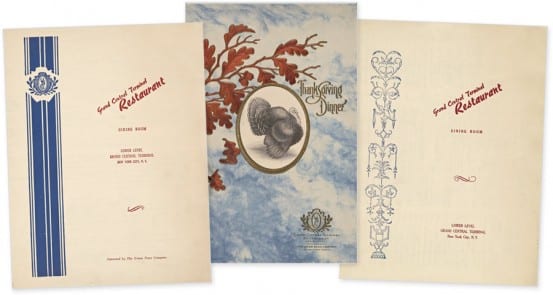
Front covers of restaurant menus: 1955, 1917, and 1959.
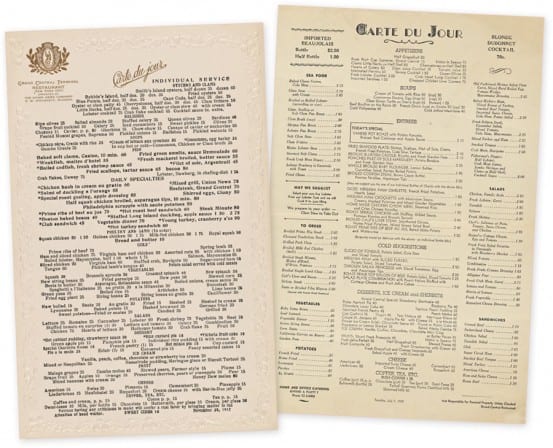
Carte du jour menu, or daily specials. From 1917 and 1959.
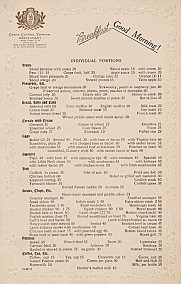 Â
 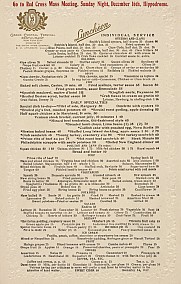 Â
 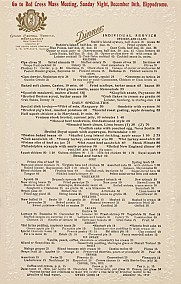
Breakfast, Lunch, and Dinner menus from 1917.
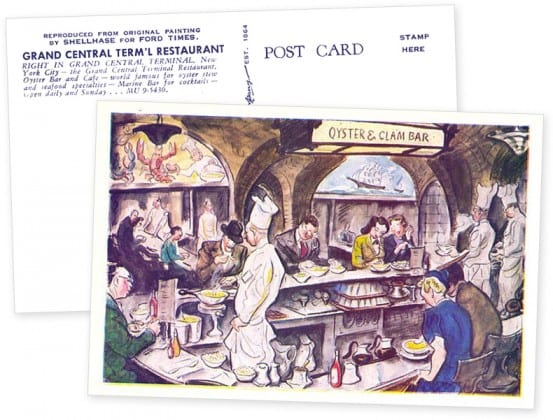
Postcard from the Grand Central Terminal Restaurant and Oyster Bar
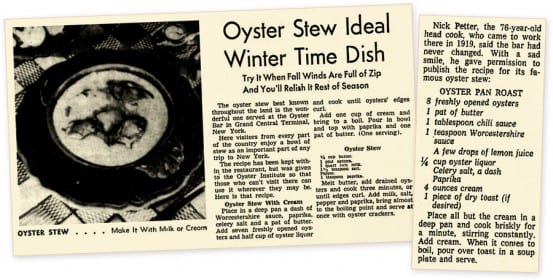
Every winter in the 1950’s seemed to bring out this fluff piece about Oyster Stew in various newspapers. After the closing of the Oyster Bar in 1974, head cook Nick Petter allowed the NYTimes to publish the recipe for Oyster Pan Roast.
The Oyster Bar, as we are familiar with it, came into being in 1974. The original restaurant had been owned and operated by the Union News Company, and they were looking into closing several of their restaurants around the country. Some said that the restaurant had not been profitable for quite a while, but it stayed open for nostalgia. On July 31st, 1974 at 4pm, the Grand Central Terminal Restaurant, including their oyster bar, was officially closed, with little notice.
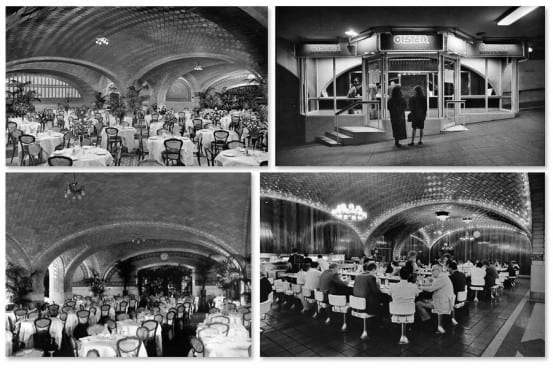
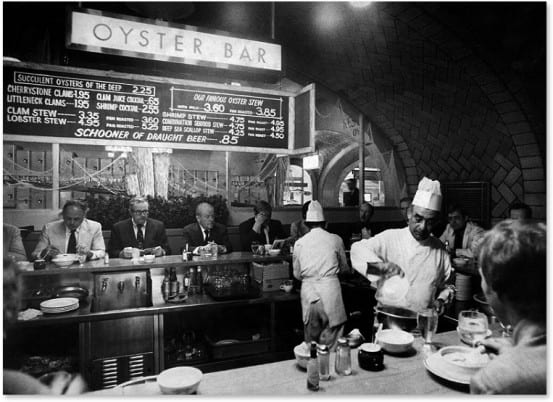
Historical photos from the Oyster Bar. The lower image appeared in the New York Times, and shows chef Tom Sato in 1974, shortly before the restaurant closed.
The MTA had already been looking around for another person to take the helm at the restaurant, and restauranteur Jerome Brody accepted the challenge. Several former employees returned to the new restaurant when it reopened several months later. (According to the Oyster Bar’s history, the restaurant had been shuttered for two years. This contradicts the NYTimes account that says the original restaurant closed in July, and reopened in November). The new restaurant was officially called the “Oyster Bar,” and served a seafood-focused menu.
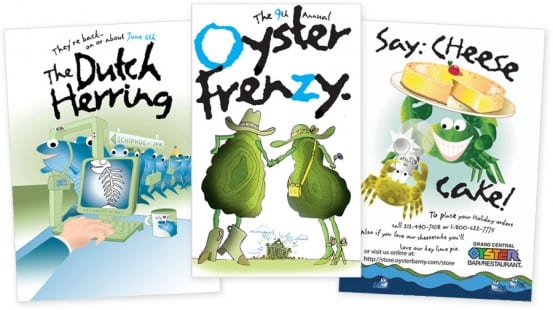
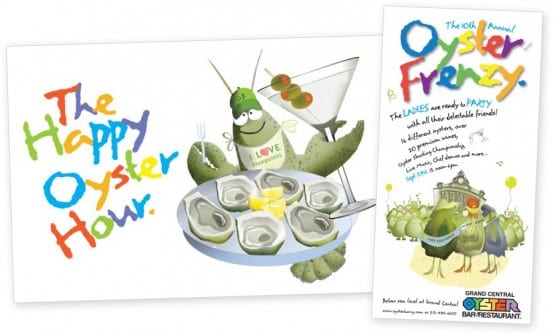
Some of the Oyster Bar’s quirky advertising. The ads are certainly interesting and unique, and I love the stylized illustrations of Grand Central that appear in several.
The restaurant was shuttered briefly one other time in its long history, in June 1997 due to fire. A blaze started after a refrigerator short-circuited around 2:30 in the morning. The inferno destroyed kitchen equipment and furnishings, and many of the Gustavino tiles on the ceiling. Although the Terminal was evacuated, most people had already left Grand Central by that time. By mid-July the Oyster Bar had reopened, or at least one part of it. The full restaurant reopened several weeks later. Eagle-eyed patrons may notice subtle color differences in the Gustavino tiles, the tiles replaced after the fire have a slightly different color.
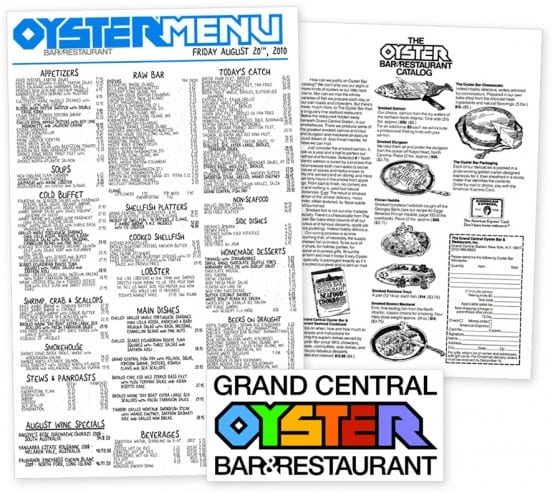
The above ads fit well with the also quirky multicolored Oyster logo. Menus at the restaurant today look similar to this.
Besides running into those two short-term snags, the restaurant / Oyster Bar has been in operation all one hundred years the Terminal has been around. Many tenants have come and gone, like the theater and the barbershops and haberdashery. Countless new shops have populated the Terminal since its restoration, including the Apple Store. But none are really a New York institution like the Oyster Bar, the home of “New York’s Greatest Dish.” You may no longer be paying 35 cents for a dozen oysters, but you can still grab a good meal before catching a train or subway. So happy 100th not only to Grand Central, but to the Oyster Bar as well!


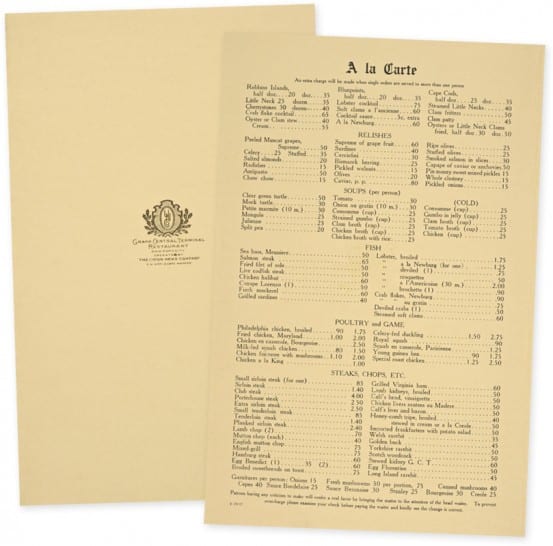
Alas, I never ate in the Oyster Bar but I do remember eating at the Automat across the street (80 East 42 Street). It was in, or close to, the Airlines Terminal building where you could buy plane tickets and then take a bus (probably one of Carey’s) to the airport.
There was another nearby Horn & Hardart ‘Automat’ on Lex at about 46th St.. The food wasn’t really great, but the service was unique.
Speaking of oyster bars, after the devastating effects of SuperStorm Sandy several writers commented on the depleted oyster beds of the Hudson estuary and suggested that their revival might be part of a future protection plan. Here’s a teaser:
Just as corals protect tropical islands, these oyster beds created undulation and contour on the harbor bottom that broke up wave action before it could pound the shore with its full force. But 400 years of poor behavior on the part of humans have ruined all that. As Mark Kurlansky details in his fine book “The Big Oyster,†during their first 300 years on these shores colonists nearly ate the wild creatures out of existence.
Good news, methinks: the oyster population is recovering in, of all places, the Gowanus Canal! It will be a while before they are safe to eat. I’d like to see the NYSDEC (nee ‘The Conservation Dept.’) place some emphasis on these old oyster beds. Let the feds make it a ‘superfund’ site and remove all the unfortunates in ‘cement shoes’ from the canal.
My great uncle was the manager of the Grand Central Oyster Bar. I have pictures of him. His name was Sydney Oliver Sampson. Would you like me to send the pictures to you? Also, in any of the items in your collection is his name mentioned?
It has been quite a while since I wrote this, so I don’t recall seeing his name. I would love to see photos though!